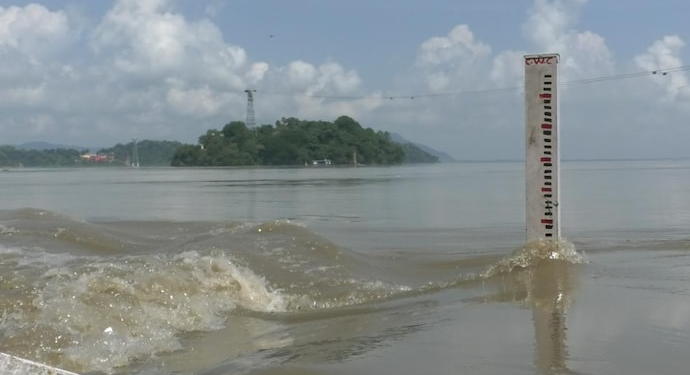Water levels in the Brahmaputra river continued to remain dangerously high in Dibrugarh district of Assam on Sunday, following sustained rainfall across several parts of the state and neighboring regions. The situation has led to widespread flooding in low-lying areas, submerging homes and agricultural fields across vulnerable sections of the district.
The persistent high water levels come amid a tragic escalation in the state’s flood crisis, with eight people losing their lives due to floods and landslides in the past 24 hours, according to the Assam State Disaster Management Authority (ASDMA). The casualties included three flood-related deaths and five fatalities from landslides, underscoring the severe impact of the current weather pattern.
In Dibrugarh, one of the 12 districts affected by the first major spell of monsoon flooding this year, the sustained downpour has created a critical situation for residents in flood-prone areas. The high Brahmaputra water levels pose ongoing risks to communities along the riverbank and in low-lying regions that are typically the first to be inundated during flood events.
Meanwhile, Guwahati, the state’s largest city, witnessed severe waterlogging in multiple areas on Sunday as continuous rainfall lashed the metropolitan region. The urban flooding in Guwahati reflects the broader challenges facing Assam during this early monsoon period, with both rural and urban areas struggling to cope with the intense precipitation.
The deaths reported across the state highlight the human cost of the current crisis. In flood-related incidents, two people including a child died in Golaghat district, while one person drowned in flood waters in Lakhimpur district. Additionally, landslides claimed five lives in Kamrup (Metro) district, with two others sustaining injuries.
ASDMA reports indicate that 175 villages under 20 revenue circles across 12 districts have been affected by the flooding. The affected districts include Dhemaji, South Salmara, Lakhimpur, Dibrugarh, Golaghat, Darrang, Nagaon, Karbi Anglong, Kamrup, Biswanath, Tinsukia, and Karbi Anglong West.
Urban areas like Guwahati face additional challenges with waterlogging due to inadequate drainage infrastructure and rapid urbanization that has reduced natural water absorption capacity. The severe waterlogging reported on Sunday demonstrates the vulnerability of even the state’s most developed areas to extreme weather events.
Emergency response teams and disaster management authorities are working to provide relief and rescue operations in affected areas across the state. The early occurrence of such significant flooding and the associated casualties raise serious concerns about the potential severity of the entire monsoon season ahead.





